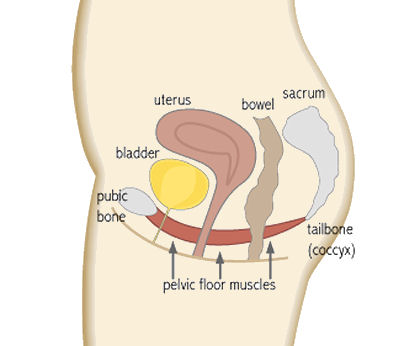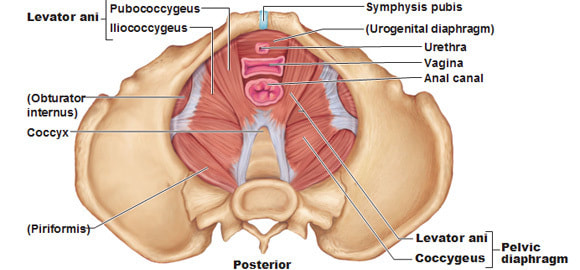The pelvic floor?
|
Your pelvic floor decides how well you pass your urine and stools. The pelvic floor is also known as the pelvic diaphragm. Getting to the basics, the pelvis is the area near your hips and genitals.
Your pelvic floor is made of muscles known as levator ani, coccygeus muscle, and the connective tissue. As you see in the image below, the pelvic floor muscles extend from your pubic bone to your tailbone and are like a hammock. On the sides, they extend from one sitting bone to the other. |
What is the pelvic floor?
|
The pelvic muscles span your pelvis and support your bladder, bowel, and uterus (in women) and help you control your urges to pass urine and stools. Your pelvic floor is like a muscular trampoline, firm, and thick. Just like a trampoline, your pelvic floor moves up and down. Your organs namely bladder, bowel, and uterus lie on your pelvic floor which has the holes for each of their passages to pass through: urethra for bladder, anus for your large intestine, and vagina for the uterus. Pelvic floor wraps firmly around the passages to keep them shut. Also, urethra and anus have sphincters at their openings to keep them close and open-up only when you want them to.
|
Other essential functions of pelvic muscles:
|
Can you feel your pelvic muscles?
|
Yes, you can feel them though they are deep within. You can feel them while you are standing or sitting or lying down. Relax your whole body. Apply pressure on your anus and genitals as if you are intentionally trying to hold your fart and urine at the same time. You feel a sharp pull, and they are your pelvic muscles. When you apply pressure on your pelvic muscles, your bowel, bladder, and uterus go up, and your sphincters get tight. When you relax the pelvic muscles, your sphincters loosen, and you can pass your pee or poo.
There’s another way for finding your pelvic muscles. Here, try to stop the stream of urine midway while you are passing urine. Then, you can release them to empty your bladder. The muscles that you feel are your pelvic muscles. However, be sure to try this only once a week. Anything more than that may send wrong signals to your bladder. Pregnancy, childbirth, and constipation can weaken your pelvic muscles. However, you can strengthen your pelvic floor with specific exercises just like you train your arms or legs. Meet us at the “Women’s health physio” for more details. |




